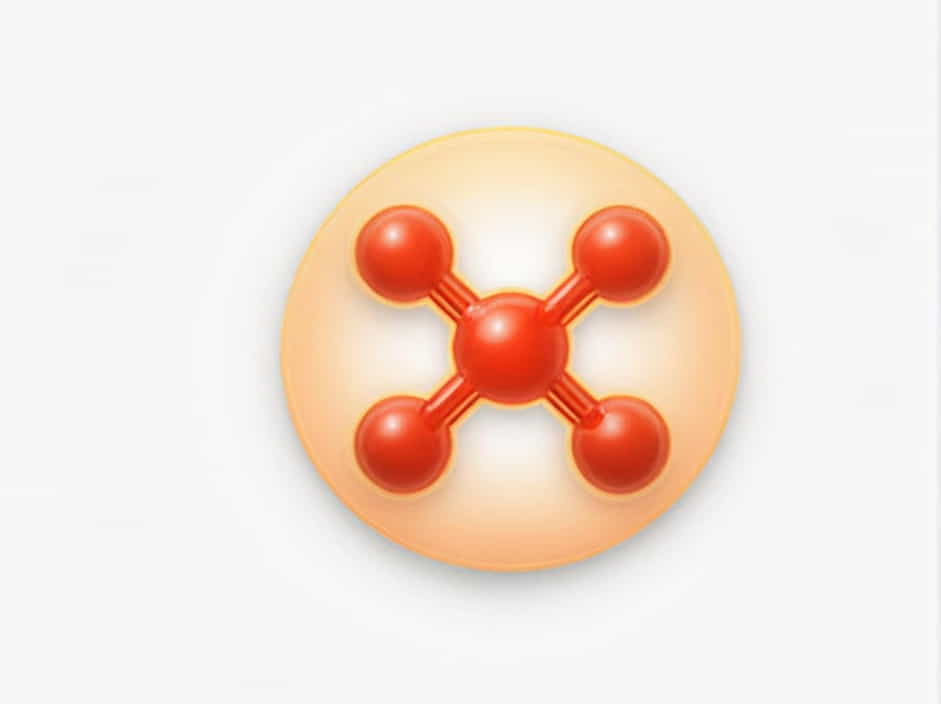The Na⁺/K⁺-ATPase, also known as the sodium-potassium pump, is a crucial enzyme in cellular function. It maintains ion balance by actively transporting sodium (Na⁺) and potassium (K⁺) ions across the cell membrane.
This pump hydrolyzes ATP after binding three sodium ions (Na⁺) from the cytoplasm, initiating the transport cycle. The energy released drives the exchange of three Na⁺ ions out and two K⁺ ions in, ensuring proper cell function.
This topic explores the mechanism, functions, regulation, and significance of the Na⁺/K⁺-ATPase in various physiological processes.
What Is the Na⁺/K⁺-ATPase?
The Na⁺/K⁺-ATPase is an active transport enzyme found in the plasma membrane of most animal cells. It is essential for:
- Maintaining cell membrane potential
- Regulating osmotic balance
- Supporting nerve and muscle function
- Driving secondary active transport
Structure of Na⁺/K⁺-ATPase
The pump consists of two main subunits:
- α-subunit: Contains the ATP-binding and ion transport sites.
- β-subunit: Helps stabilize and regulate enzyme function.
Some cells also contain an additional γ-subunit, which modulates activity.
How Does the Na⁺/K⁺-ATPase Work?
The sodium-potassium pump follows a cyclical transport mechanism, relying on ATP hydrolysis.
Step-by-Step Mechanism
1. Sodium Binding and ATP Hydrolysis
- Three Na⁺ ions bind to the pump from the cytoplasm.
- ATP is hydrolyzed, releasing energy and transferring a phosphate group to the pump.
2. Conformational Change and Na⁺ Release
- The pump undergoes a structural shift, exposing Na⁺ ions to the extracellular space.
- Three Na⁺ ions are released outside the cell.
3. Potassium Binding and Dephosphorylation
- Two K⁺ ions bind from the extracellular space.
- The phosphate group is removed, causing another conformational change.
4. Potassium Release and Pump Reset
- The pump returns to its original shape, releasing two K⁺ ions inside the cell.
- The cycle repeats.
This process keeps Na⁺ concentration high outside and K⁺ concentration high inside the cell.
Why Is the Na⁺/K⁺-ATPase Important?
The Na⁺/K⁺-ATPase is essential for multiple biological functions.
1. Maintaining Resting Membrane Potential
- The pump creates an electrochemical gradient, allowing neurons and muscle cells to function properly.
- Essential for nerve impulse transmission and muscle contraction.
2. Regulating Cell Volume
- Prevents excess water from entering cells by controlling ion balance and osmotic pressure.
- Essential for preventing cell swelling or shrinking.
3. Driving Secondary Active Transport
- The Na⁺ gradient powers glucose, amino acid, and ion transport via symporters and antiporters.
- Example: Sodium-Glucose Transporter (SGLT) in the intestines and kidneys.
4. Supporting Energy-Intensive Organs
- Brain, heart, and kidneys depend heavily on the Na⁺/K⁺-ATPase.
- Neurons require the pump for signal transmission and synaptic activity.
Factors That Regulate Na⁺/K⁺-ATPase Activity
Several factors influence the function of this enzyme.
1. Hormones and Neurotransmitters
- Epinephrine and insulin increase pump activity.
- Thyroid hormones (T3/T4) enhance Na⁺/K⁺-ATPase expression.
2. Intracellular Sodium and Potassium Levels
- High Na⁺ inside the cell stimulates ATPase activity.
- Low K⁺ outside the cell can slow down the pump.
3. ATP Availability
- The pump depends on cellular ATP levels.
- In conditions like hypoxia (low oxygen), ATP production decreases, reducing pump efficiency.
4. Inhibitors
- Ouabain and digoxin inhibit Na⁺/K⁺-ATPase, increasing intracellular Na⁺ and indirectly boosting heart contractions (used in heart failure treatment).
Na⁺/K⁺-ATPase and Human Health
Dysfunction of the sodium-potassium pump is linked to several diseases.
1. Neurological Disorders
- Impaired Na⁺/K⁺-ATPase function contributes to Alzheimer’s disease, epilepsy, and migraines.
- Proper ion balance is crucial for neuronal signaling.
2. Heart Disease
- Cardiac glycosides like digoxin help treat heart failure by altering Na⁺/Ca²⁺ exchange.
3. Kidney Disorders
- The pump plays a role in sodium reabsorption in nephrons.
- Dysfunction can lead to hypertension and electrolyte imbalances.
4. Metabolic Diseases
- Altered Na⁺/K⁺-ATPase activity is linked to insulin resistance and type 2 diabetes.
The Na⁺/K⁺-ATPase hydrolyzes ATP after binding three Na⁺ ions, initiating the transport cycle. This pump is vital for cellular function, maintaining membrane potential, regulating volume, and supporting energy-dependent processes.
Its activity is tightly regulated by hormones, ion levels, and ATP availability. Dysfunction of the Na⁺/K⁺-ATPase is associated with neurological, cardiovascular, and metabolic diseases, highlighting its importance in human health.
Understanding the mechanism and regulation of this enzyme is crucial for developing treatments for conditions like hypertension, heart failure, and neurological disorders.
